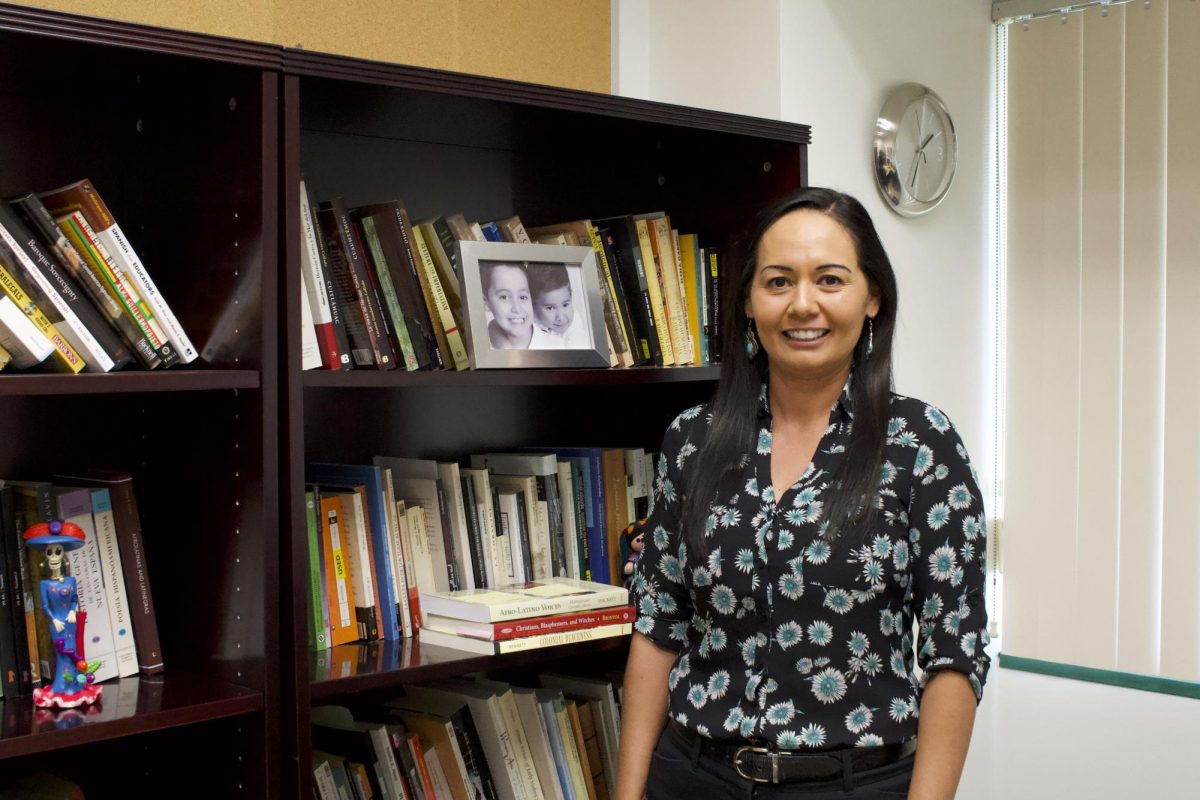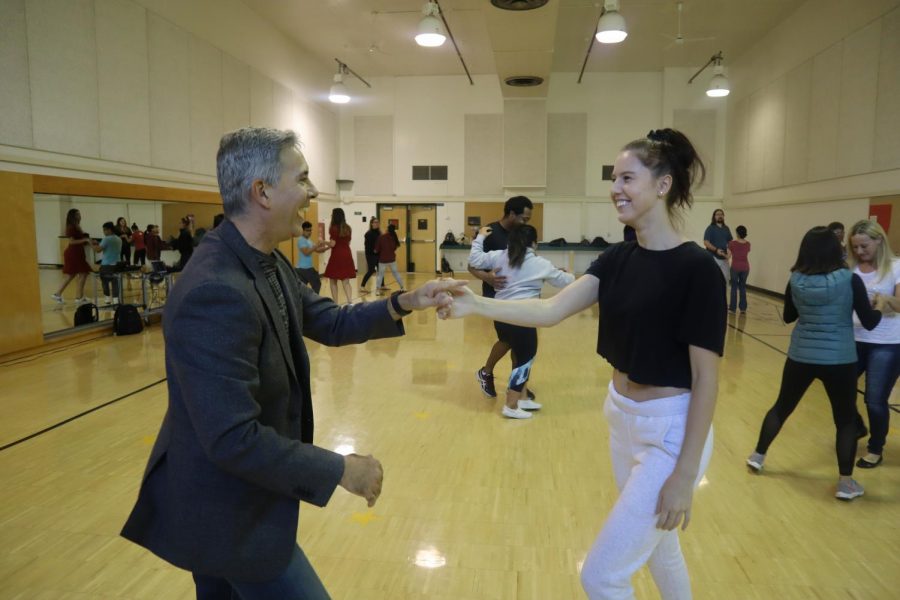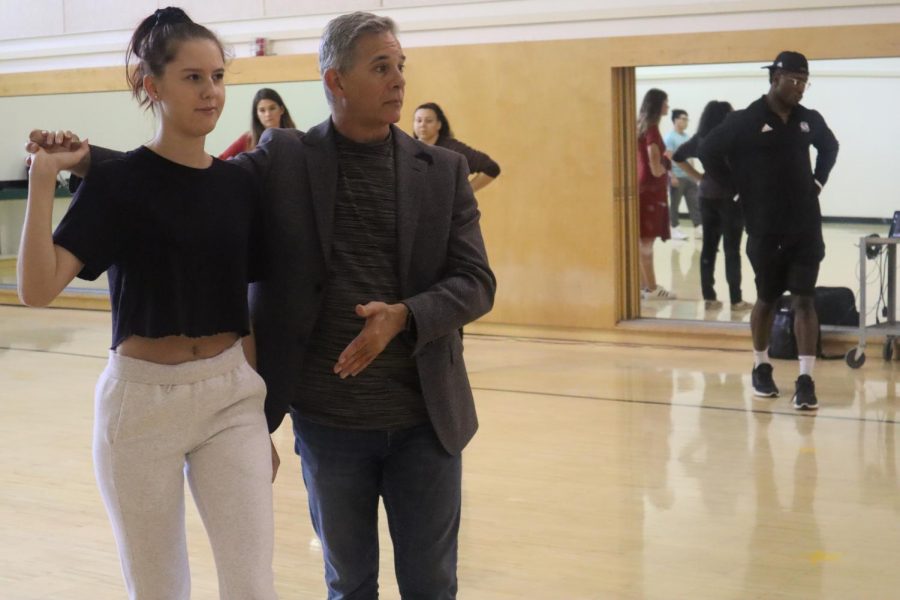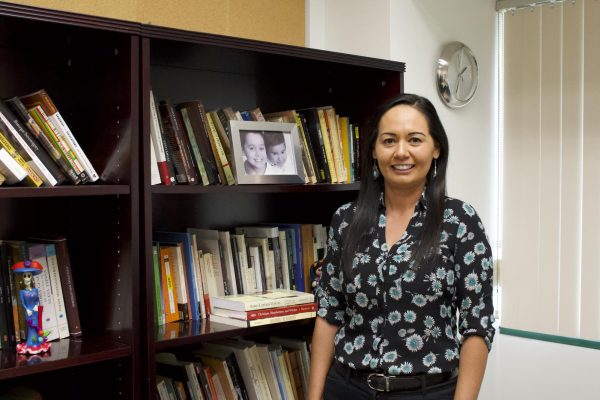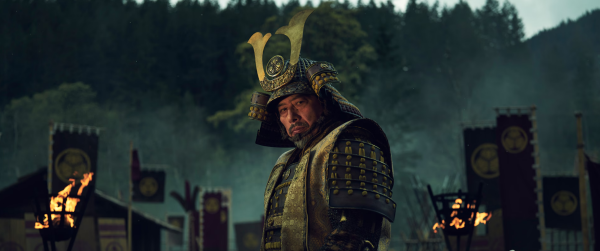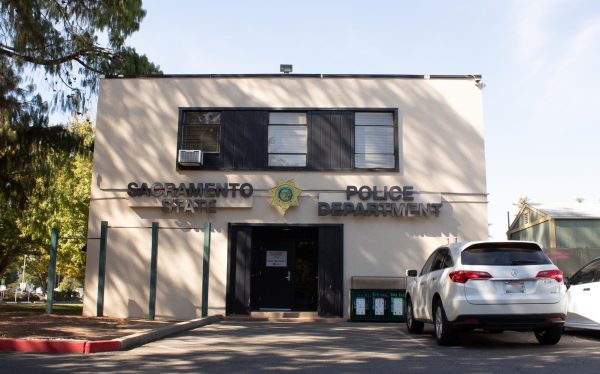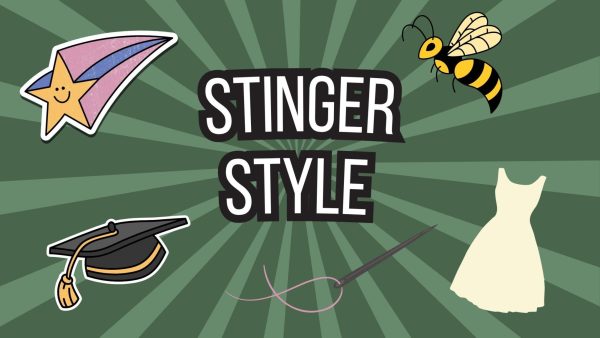Sac State gymnastics coach leads students in ballroom dance class
Randy Solorio helps students improve their coordination, balance and self-confidence
Gymnastics head coach Randy Solorio dances with senior kinesiology major Viktoriya Rizvanova in the ballroom dancing class Solorio teaches at Sacramento State. Solorio has been coaching gymnastics at Sac State since 1986.
Randy Solorio’s first dance partner was his mother, and every time he dances the cha-cha today with his daughter, Solorio is taken back to his childhood, a generational connection he imparts on his ballroom dance students.
Sacramento State gymnastics head coach Solorio also teaches ballroom dance as part of the Department of Kinesiology at Sac State. The class is currently taught in two weekly sections and helps students of all levels and abilities.
Routines taught include the cha-cha, foxtrot and tango that lead to better balance, coordination and a sense of self-confidence.
Solorio, currently in his fifth year as head coach, started as an assistant coach for the gymnastics team at Sac State in 1986. He began doing gymnastics himself in sixth grade and competed in college before becoming a coach.
Solorio is also a lecturer on campus in kinesiology and graduated from Sac State in 1994 with a bachelor’s degree in kinesiology and received a master’s in 2004 for sports performance.
Story continues below tweet.
The beginning ballroom dancing class led by gymnastics coach Randy Solorio #happeningnow in Yosemite hall rn 183 @sacstate @TheStateHornet pic.twitter.com/zY3ME1sdX9
— Tracy Holmes (@TestKaSe) October 15, 2019
Which poses the question, how did Solorio end up teaching dance?
“Well for me, gymnastics has always been my sport, but I’m also an entertainer,” Solorio said. “I sing, dance, act and have toured shows with theater. I’m also very social, so even though ballroom dancing isn’t interrelated with gymnastics per se, it does give the opportunity for performance value. Gymnastics has a performance value, unlike some other sports.”
Performance value relates to the ability of both forms of movement to express emotion and personality, according to Solorio.
RELATED: Sac State President shares his love for Hornet athletics
Solorio said he teaches ballroom dance “strictly as a social outlet,” meaning there is no competition involved in the class. He also noted that styles of dance can apply to gymnastic routines and that student-athletes can learn “how to hold their posture” and “how to have a little more confidence in themselves” through learning ballroom dance techniques.
“Gymnastics has a dance component in floor exercise and balance beam,” Solorio said. “The athletes have the opportunity to express themselves through many styles of dance that they feel comfortable performing.”
Senior football player George Obinna, a defensive lineman, is currently in Solorio’s ballroom dancing class and said his balance and coordination have benefited from the experience.
“Originally I started taking it because I wanted to learn something new and learn how to be better on my feet,” Obinna said. “There are some things I learned in this class that have helped me on the field as far as coordination, my feet feel better on the field.”
Senior kinesiology major Viktoriya Rizvanova said she wanted to try ballroom dancing after watching the television series “Dancing with the Stars.”
“I’ve always wanted to try it out,” Rizvanova said. “I started a few semesters ago with Randy and I just fell in love with it. I’ve loved it ever since.”
Rizvanova said kinesiology, as the study of body movement, applies a lot to ballroom dancing.
“You have to think about your movements both mentally and physically,” Rizvanova said. “In ballroom, you have to think about the steps and the movement, and feel yourself move through each step and each dance.”
Story continues below gallery.
Solorio said his students get intellectual exercise out of the class as well.
As a class requirement, students have to write a paper on the physiological, psychological and sociological aspects of ballroom dance in their life. Solorio said he requires this reflection because students are challenged by aspects of ballroom dance beyond the physical component.
“They’re being asked to dance with a complete stranger and trust their space,” Solorio said. “They’re holding someone in a dance frame, which is very rare, and I’m asking them to build confidence. So, those three together have been my foundation for why this class has been so successful in the sense that it’s been popular.”
RELATED: Former Sac State gymnast Dallas Smith wears many hats
Solorio said his favorite part of the class is the interaction he has with students, but Solorio has a personal connection with ballroom dance as well.
Solorio’s parents met at a dance studio in the late 1940s as ballroom dance instructors.
Solorio’s father went on teach ballroom dance into his late seventies.
Solorio is the reason the ballroom dance class remains in the kinesiology department. When other forms of dance were merging with performing arts at Sac State, Solorio said he requested that ballroom dance remain in kinesiology.
“I discussed it with other kinesiology faculty, and they agreed,” Solorio said. “I see ballroom dance as a lifetime activity. It meets social, psychological and physiological aspects. It, of course, has a performance value to it but I wanted it to be more about the lifetime activity.”
Ballroom dance, according to Solorio, is a “lifetime activity,” meaning people can do it well into old age, just like his father did.
“It takes me back to growing up,” Solorio said. “My very first dance was with my mom. Every time I do a cha-cha, I remember that my first dance partner was my mom and now my daughter has been my dance partner. We have that connection through the generations.”
Your donation will support the student journalists of Sacramento State University. Your contribution will allow us to purchase equipment and cover our annual website hosting costs.



















